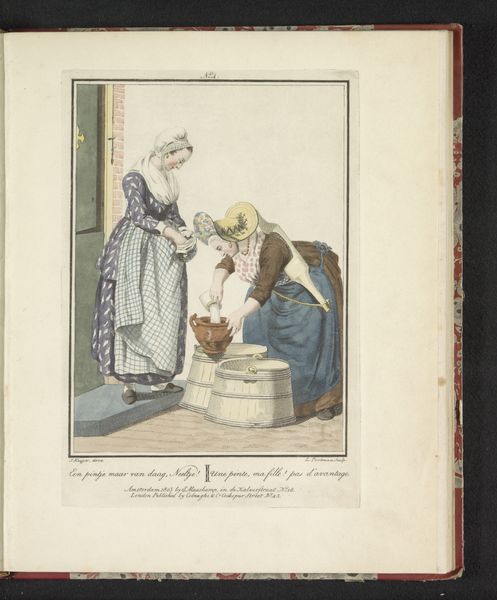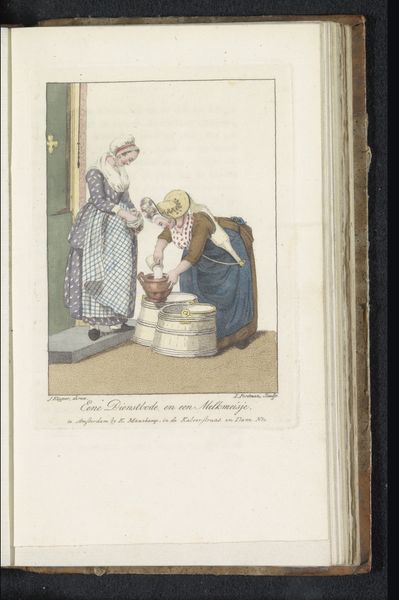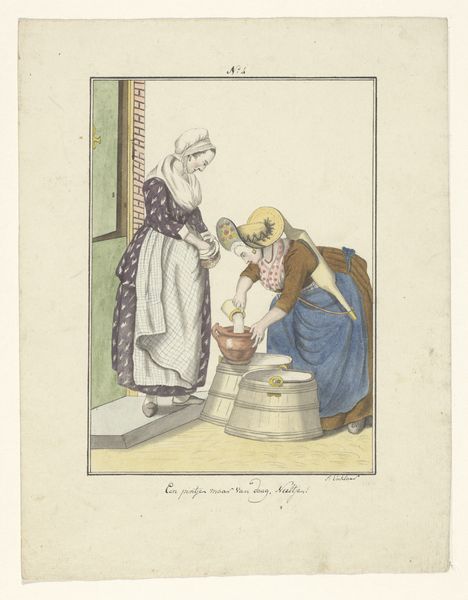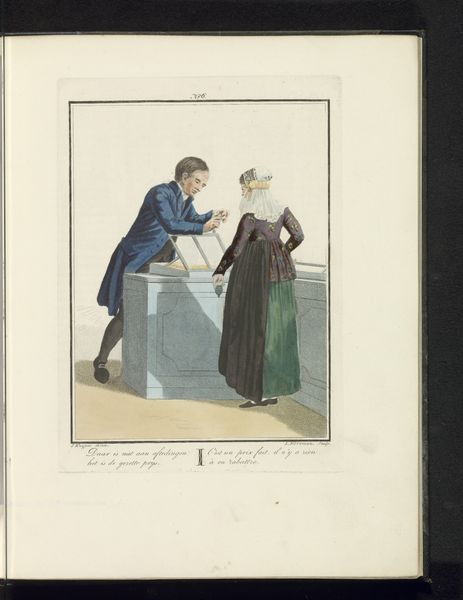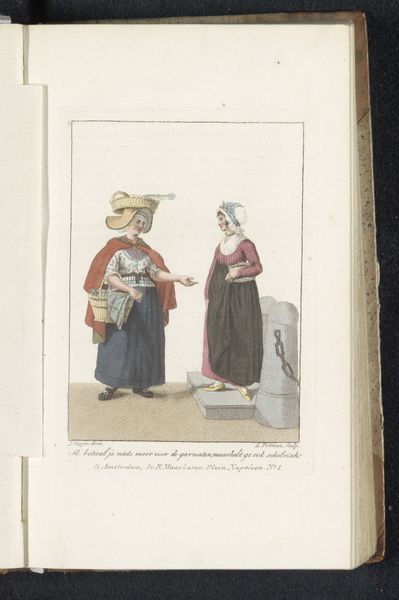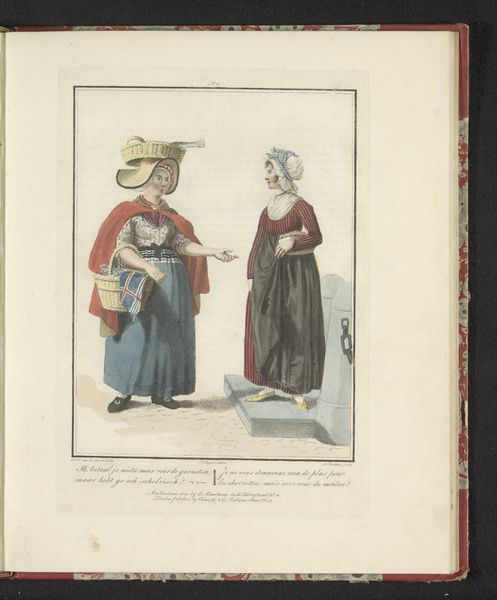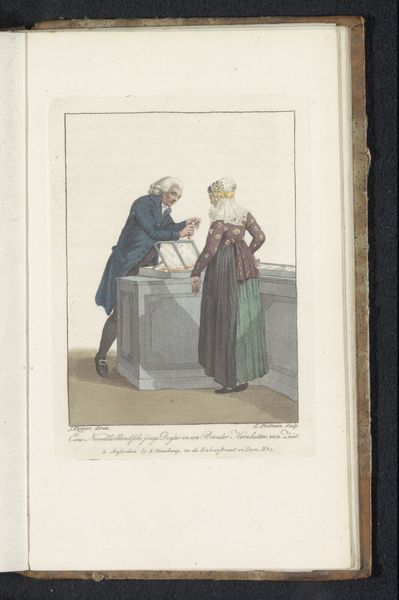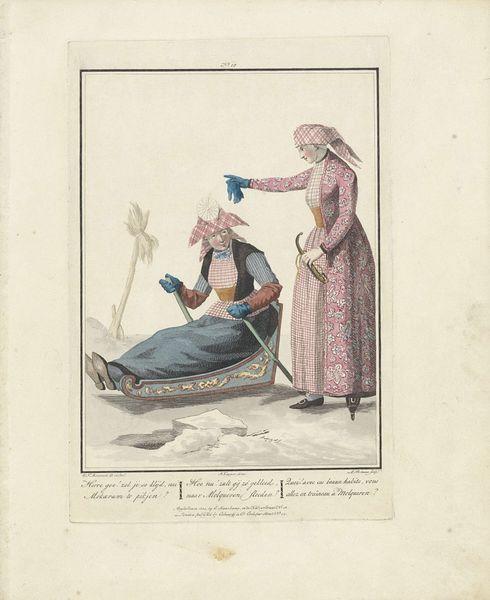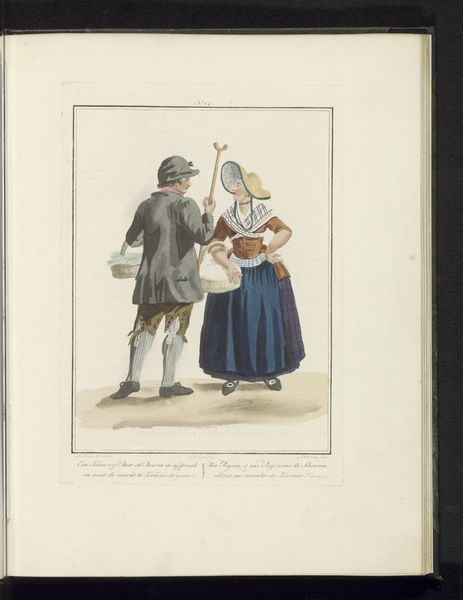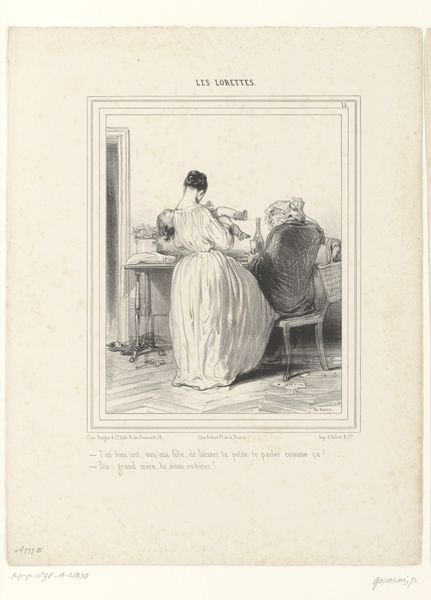
drawing, watercolor
#
portrait
#
drawing
#
watercolor
#
romanticism
#
costume
#
sketchbook drawing
#
watercolour illustration
#
genre-painting
Dimensions: height 218 mm, width 158 mm
Copyright: Rijks Museum: Open Domain
Editor: So, this watercolor drawing from between 1803 and 1829 is by Ludwig Gottlieb Portman, called "Dienstmeisje en melkverkoopster," which translates to "Maidservant and Milk Seller," now at the Rijksmuseum. I find the costumes charming, but also a bit… stiff? What catches your eye in this scene? Curator: Indeed. Beyond the romanticized depiction, I am intrigued by the cultural scripts embedded within the image. Observe how costume plays a crucial symbolic role. These aren't just pretty clothes; they visually encode status, regional identity, and perhaps even marital availability. Consider the head coverings— what stories might they be silently telling us about these women's lives? Editor: So, it's like a language of clothing? Is there a reason they are working together, the maid and the milk seller? Curator: Precisely. Notice the dynamic between the figures. While seemingly a simple genre painting, it evokes deeper questions about social roles and interdependence. What does it mean to depict these two women together, engaged in this labor? Does it challenge or reinforce social hierarchies? The pitcher and buckets might evoke symbols of abundance and purity but could also point towards the daily struggles of working-class women. Editor: I see. The artist isn't just showing us a scene, but commenting on society. So the seemingly simple act of pouring milk becomes charged with all this…meaning. Curator: Exactly! Images are powerful carriers of cultural memory. Artists often tap into existing visual traditions while also subtly reshaping them to reflect contemporary realities or aspirations. We must always be alert to the layers of symbolism interwoven into seemingly straightforward depictions of everyday life. What do you make of the doorway; is that like a border or threshold, like the women being on the border of roles, status? Editor: That's an interesting idea, that doorways always mean something. Now I'm looking at the painting totally differently – thinking about hidden codes and unspoken stories. Thank you for the guidance, it changes my interpretation.
Comments
No comments
Be the first to comment and join the conversation on the ultimate creative platform.
